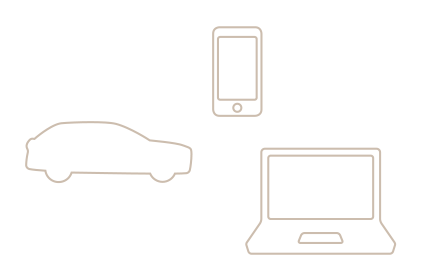Search
REMONDIS’ business locations around the world
Being one of the world’s leading recycling, service and water companies, REMONDIS has around 1,000 business locations across the globe. These can be found in over 30 countries in Europe, Africa, Asia and Australia.
REMONDIS’ business locations in Germany
REMONDIS’ business activities in Germany are managed and carried out by its six regional companies. REMONDIS also has a whole variety of specialist companies, many of which are based here in Germany as well.
Technology metals – also known as specialist or precious metals – are of great economic importance. And they will only become more important. They are used in practically all of today’s modern devices – from smartphones, to computers, all the way through to electric cars.

Technology metals – both rare and valuable
Technology metals include precious metals such as gold, silver and platinum as well as the so-called rare earth metals such as neodymium (found in the super magnets in wind turbines) and tantalum (used to build capacitors). Their name – rare earths – says it all. In many cases, supplies of these raw materials on our planet are very limited. The few regions rich in rare earths are all beyond Europe’s borders, some of which are in politically unstable countries. Indeed, this was one of the reasons why the European Commission classified the supply of these materials as critical in 2018.
There are currently no marketable processes available for recovering rare earths on a grand scale. This can be put down to the fact that, for the most part, the volumes installed in the products are very small, making recycling financially unviable.
We took a closer look at a number of technology metals to put together some facts and figures for you. Including detailed info about gold, silver, palladium and neodymium.

Gold
More than half of all the gold used in Germany comes from recycling (2010: 56%). All in all, the recycling rate of gold used as a technology metal from post-consumer waste is estimated to be around 30% in Germany. Globally, recycled gold covers between 29% and 31% of total demand with over 80% of this amount coming from post-consumer waste. A mere 2% to 5% of the gold used is believed to be lost during production in Germany which means that gold life cycles – in production at least – are effectively completely closed.



Silver
The recycling of silver from post-consumer goods differs hugely according to the type of product. The recycling rate of silver from jewellery, silverware, coins and medallions is over 90%. In contrast, massive amounts of silver are lost when it comes to the recycling of waste electrical and electronic equipment. Even though the technical recycling process is very efficient recovering around 95% of the metal, the informal waste management schemes (low collection rates, unsuitable treatment processes etc) greatly reduce the recycling rate – so that it lies between 10% and 15%. Looked at on a global scale, the overall recycling rate of silver from post-consumer waste lies between 30% and 50% (a figure that also acts as a benchmark for the recycling situation in Germany). Worldwide, around 20% of recycled silver comes from production waste and 80% from post-consumer waste and substitutes between 20% and 32% of the total amount of virgin raw materials used.

Palladium
While the global recycling rate of palladium from vehicle catalytic converters lies at between 50% and 60%, the recycling rate in Germany and other European countries is lower as they export a greater number of old cars. In Germany, just 29% of the platinum group metals are recovered from vehicle catalytic converters, 23% of the palladium used in waste electrical and electronic equipment, 92% of the palladium used in the chemicals industry and 50% of the palladium used in dentistry. Based on these values and looking at the share of recycled palladium in the various areas of demand, then the overall recycling rate of palladium can be estimated to be 30% in Germany. It is not known if there is a loss of palladium during the production process and it is believed to be low due to the high price of palladium. Worldwide, recycled palladium covers around 50% of overall demand with over 80% of this material coming from post-consumer waste.



Neodymium
The most important area of use for neodymium is in permanent magnets. The greatest areas of demand for these neodymium-iron-boron magnets are large and small motors. Small motors are needed for computer hard drives, for car window motors as well as for many other applications. The most important areas of use of the large motors are in electric cars and wind turbines. Significant volumes of neodymium have to be installed in wind turbines: around one tonne of neodymium is required per megawatt of power. A much smaller amount is needed for the magnets installed in microphones, loudspeakers and in-ear headphones. A minimal amount of neodymium (less than 1%) is recovered from permanent magnets in post-consumer waste. All in all, 1% to 10% of the virgin raw material consumed globally is substituted with recycled neodymium. There is no robust data available regarding the recycling of neodymium from production waste. However, the production process is highly inefficient: the loss of material lies at around 50%.
The recycling rates of a selection of technology metals (in %)
| Metal | Recycling rate of post-consumer waste | Loss of material in product manufacturing | Production waste | Post-consumer waste | Substitution of virgin raw materials |
|---|---|---|---|---|---|
| Gold | 30 | 2–5 | < 20 | > 80 | 56 |
| Silver | 30–50 | 0 | < 20 | > 80 | 20–32 |
| Palladium | 30 | 0 | < 20 | > 80 | 50 |
| Platinum | 30 | not specified | < 20 | > 80 | 50 |
| Indium | 0 | 15 | 99 | 1 | 25–50 |
| Tantalum | < 1 | not specified | 90–99 | 1–10 | 10–25 |
| Yttrium | 0 | not specified | 0 | 0 | 0 |
| Neodymium | < 1 | 50 | not specified | not specified | 1–10 |



